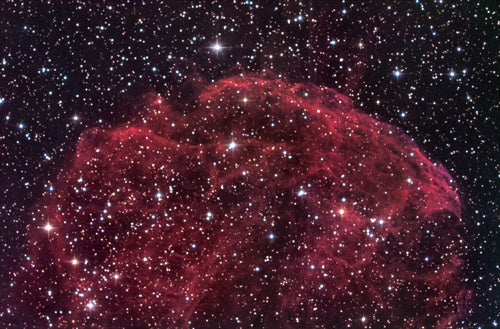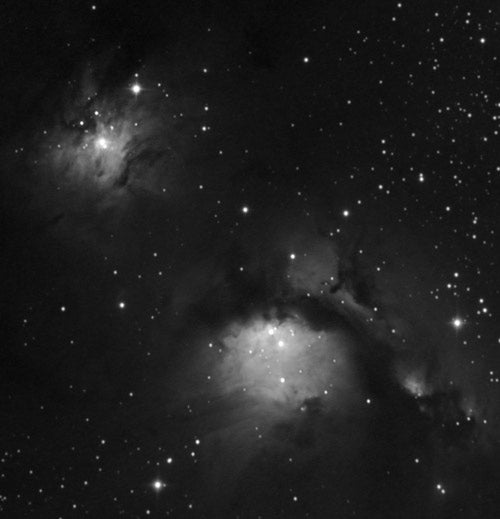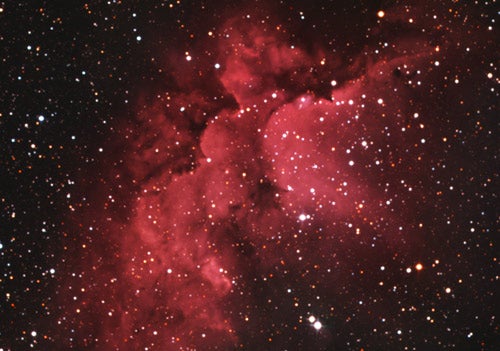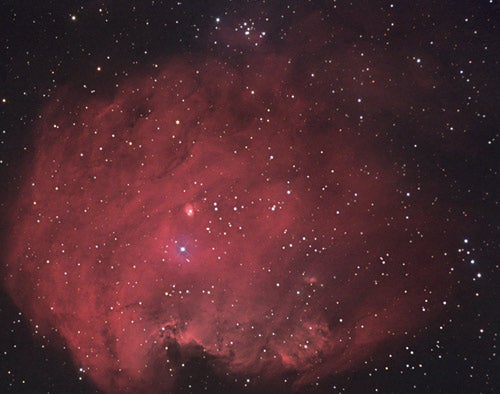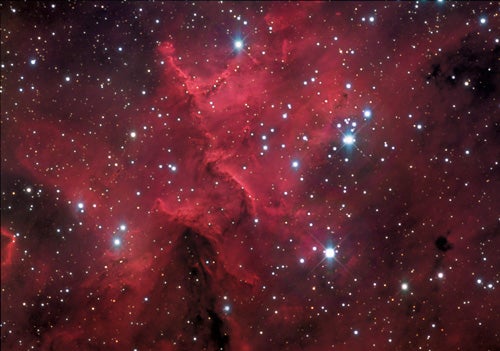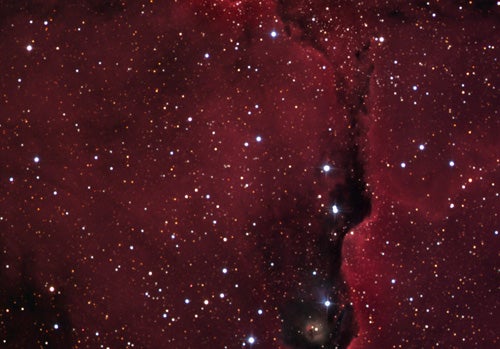The Jellyfish Nebula (IC 443) in Gemini is an emission nebula, so it was on the author’s “to image” list. This LRGB image combines 90 minutes of luminance, and 24 minutes each of red, green, and blue data. The author used his 20-inch Newtonian reflector and an FLI IMG6303E CCD camera to capture the jellyfish.
Brian Lula
Astroimager Brian Lula sent us so many great images with his story that we couldn’t use them all in the magazine. Here’s more proof of Lula’s talent and a selection of objects you didn’t see.
The Jellyfish Nebula
The Jellyfish Nebula (IC 443) in Gemini is an emission nebula, so it was on the author’s “to image” list. This LRGB image combines 90 minutes of luminance, and 24 minutes each of red, green, and blue data. The author used his 20-inch Newtonian reflector and an FLI IMG6303E CCD camera to capture the jellyfish.
The Jellyfish Nebula (IC 443) in Gemini is an emission nebula, so it was on the author’s “to image” list. This LRGB image combines 90 minutes of luminance, and 24 minutes each of red, green, and blue data. The author used his 20-inch Newtonian reflector and an FLI IMG6303E CCD camera to capture the jellyfish.
M78
This image of M78 in Orion was one of the first images taken with the author’s 20-inch Newtonian, which he built in 1999. All systems seem to work!
This image of M78 in Orion was one of the first images taken with the author’s 20-inch Newtonian, which he built in 1999. All systems seem to work!
NGC 7380
Open Cluster NGC 7380 in Cepheus is involved with emission nebula Sharpless 2-142, making a beautiful combination. The magnitude 7.2 cluster is bright enough to be viewed through small telescopes, but to see the emission nebula you’ll need at least a 16-inch scope.
Open Cluster NGC 7380 in Cepheus is involved with emission nebula Sharpless 2-142, making a beautiful combination. The magnitude 7.2 cluster is bright enough to be viewed through small telescopes, but to see the emission nebula you’ll need at least a 16-inch scope.
This “first light” image shows off the quality of the author’s new homebuilt 12 1/2-inch f/4 Newtonian reflector. The image is of NGC 2174 in Orion. Initially, it was an LRGB image with exposures of 50, 6, 5, and 6 minutes, respectively, taken at the Winter Star Party in Florida before clouds rolled in. The author added another 20 minutes per RGB channel at home in Massachusetts.
Brian Lula
NGC 2174
This “first light” image shows off the quality of the author’s new homebuilt 12 1/2-inch f/4 Newtonian reflector. The image is of NGC 2174 in Orion. Initially, it was an LRGB image with exposures of 50, 6, 5, and 6 minutes, respectively, taken at the Winter Star Party in Florida before clouds rolled in. The author added another 20 minutes per RGB channel at home in Massachusetts.
Melotte 15
Emission nebulae are Lula’s favorite targets, but this one comes with a bonus. IC 1805 in Cassiopeia is involved with a loose cluster — Melotte 15 — of about 40 stars.
Emission nebulae are Lula’s favorite targets, but this one comes with a bonus. IC 1805 in Cassiopeia is involved with a loose cluster — Melotte 15 — of about 40 stars.
Spiral galaxy IC342 in Camelopardalis shines at a relatively bright magnitude 9.1. This image is LRGB with total exposure times of 60, 30, 30, and 30 minutes, respectively. Individual exposures were each 3 minutes long. Lula used his 20-inch RC Optical Systems Ritchey-Chrétien telescope and an FLI IMG6303E CCD camera.
Brian Lula
IC342
Spiral galaxy IC342 in Camelopardalis shines at a relatively bright magnitude 9.1. This image is LRGB with total exposure times of 60, 30, 30, and 30 minutes, respectively. Individual exposures were each 3 minutes long. Lula used his 20-inch RC Optical Systems Ritchey-Chrétien telescope and an FLI IMG6303E CCD camera.
Spiral galaxy IC342 in Camelopardalis shines at a relatively bright magnitude 9.1. This image is LRGB with total exposure times of 60, 30, 30, and 30 minutes, respectively. Individual exposures were each 3 minutes long. Lula used his 20-inch RC Optical Systems Ritchey-Chrétien telescope and an FLI IMG6303E CCD camera.

